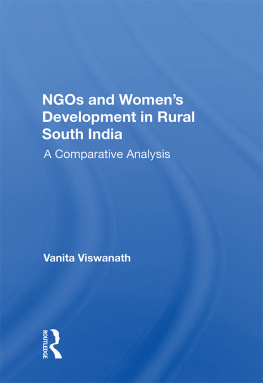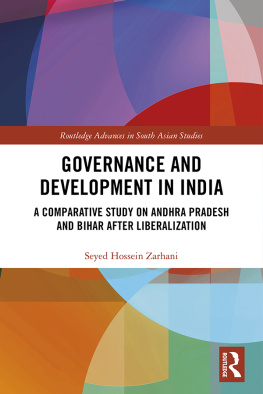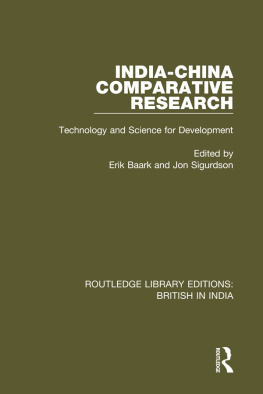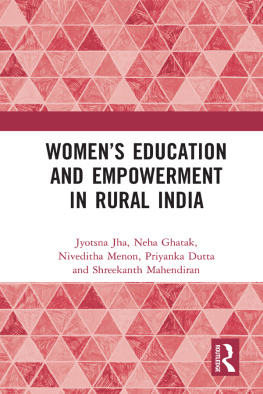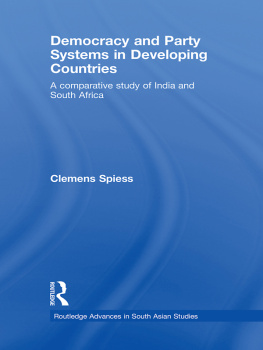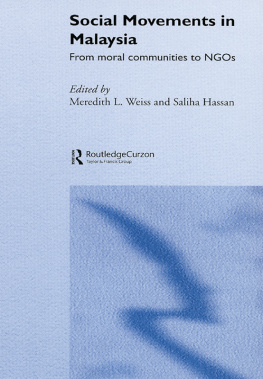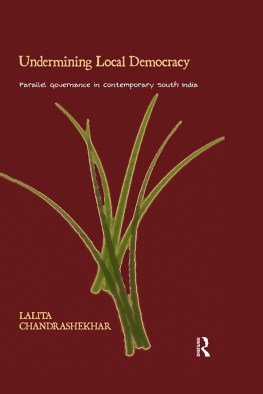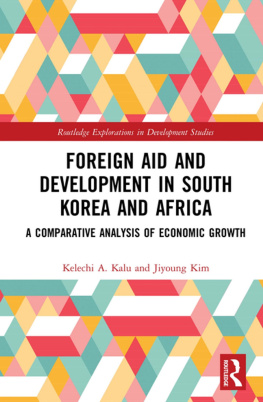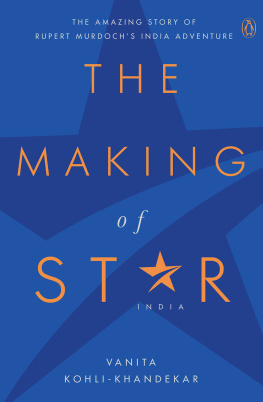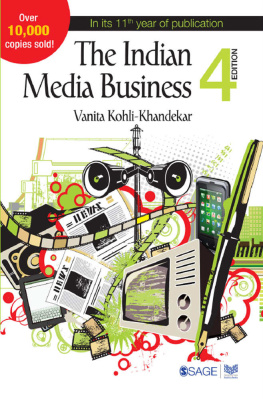First published 1991 by Westview Press, Inc.
Published 2018 by Routledge
2 Park Square, Milton Park, Abingdon, Oxon OX14 4RN
52 Vanderbilt Avenue, New York, NY 10017
Routledge is an imprint of the Taylor & Francis Group, an informa business
Copyright 1991 Taylor & Francis
All rights reserved. No part of this book may be reprinted or reproduced or utilised in any form or by any electronic, mechanical, or other means, now known or hereafter invented, including photocopying and recording, or in any information storage or retrieval system, without permission in writing from the publishers.
Notice:
Product or corporate names may be trademarks or registered trademarks, and are used only for identification and explanation without intent to infringe.
Library of Congress Cataloging-in-Publication Data
A CIP catalog record for this book is available from the Library of Congress.
ISBN 13: 978-0-367-01596-1 (hbk)
In recent years scholars have paid increasing attention to the role of women in development and to non-governmental organizations (NGOs) as effective vehicles for change. Although there are a great many published studies dealing with each of these subjects separately there are few on NGOs and their work with women. Studies that combine a theoretical framework with analysis of NGO goals and strategies, particularly to compare the effectiveness of different organizations, are rare. The present study, by using specific criteria to compare the effectiveness of two NGOS in a state in South India, attempts to provide a new approach to analyzing NGOs and rural women.
The NGO "sector" in India is diverse in size, scope, program dimensions and geographical coverage. Not all NGOs target women specifically and only very few target women exclusively. Particularly in the rural areas, there are more mixed NGOs, i.e., they target both men and women, than NGOs that concentrate on women's development. For a comparative study such as this one, locating exclusively women's NGOs operating in roughly similar economic circumstances (necessitated by my framework) in the state of my choice was a challenging task.
NGO experience in Karnataka, especially with women's development, is less well documented than NGO experience in other parts of India, although it is equally significant. It was important to me that the success and problems of NGOs in Karnataka should be shared with others in the development community, both scholars and practitioners. It helped that Karnataka was partly my home state. I spoke the official language and was familiar with the culture. Selecting the state was easy but selecting NGOs was infinitely more difficult. Based on my theoretical framework there were four criteria of selection. For a reasonable and fair assessment of NGOs' functioning they had to have been operating for at least three years in the project area; be concerned with the economic development of their target population; concentrate their efforts predominantly in rural areas and target a sizeable number of women.
Locating two exclusively women's NGOs which fulfilled all these requirements would have been ideal, but they did not exist in Karnataka. The staff of various NGOs that I contacted in the state told me they believe that traditional cultural and patriarchal orientation preclude NGOs in the rural areas from targeting women exclusively for economic programs, at least in the initial stages of the institution's development. I finally selected mixed NGOs with at least a hundred women as their clients. I spent nine months in the field, five months just researching and writing to NGOs in Karnataka to see if they fulfilled my criteria and if they would be willing to host me. It is important to recognize that for an NGO, assisting a researcher in the field entails staff time and some disruption as staff try to accommodate a researcher's requirements while juggling their schedules. Not all NGOs are able or willing to assist. Whether one identifies criteria and then selects NGOs that fulfill them or whether one contacts NGOs first to see if they will play host and then checks if they fit the criteria (and is prepared to modify research focus if they don't) is not a methodological issue alone; it can be a real dilemma. If India Development Service and Grama Vikas, the two NGOs I researched for this study, had not agreed to host me, I would have had to change the focus of my research.
I spent a month each in the project areas of the two NGOs using participant observation and unstructured interviews as my main methodological tools. I mingled with staff and clients, observed women while they were engaged in program activities, attended staff meetings and meetings of women's groups (women were already organized in groups to participate in the projects of both NGOs), interviewed staff and some clients at their homes or wherever else in the village I could catch a few moments with them (because of their busy schedules interviews with NGOs' staff were usually impromptu). I interviewed local government officials and politicians who were prepared to speak to me. I read NGOs' project reports and all material available in the NGOs' files.
I observed women participating in program-related activities, conducting group meetings, interacting with each other and the NGO staff, formally in group meetings and informally outside, as well as dealing with government officials. This "observer" status that I had on these occasions was a very useful technique to understand how women approached their problems, their participation in the group and in programs and their capacity for decision-making and initiative. I observed how women talked to each other, how they related to each other and how they related to the NGO staff.
I interviewed women during scheduled group meetings. After the group had finished with their agenda, I addressed questions to all present. Group meetings were usually held late at night for about an hour, after the women had finished cooking and serving dinner to their families. Group size varied from six to twenty.
Interviews with clients individually were difficult to organize because women found it hard to make time. When they did take place they were at clients' homes and the women were preoccupied with their domestic responsibilities. Consequently, their attention span was limited. Although I have questionnaires of about 80 women, the information contained in them is less revealing than what I found out by talking with women in a group. Also, talking with women during regular group meetings was less tedious for the women because they were away from their homes and they could participate together. The more articulate ones set the pace for the discussion and helped to maintain a focus.
Contrary to what one might expect in a group setting, individual women were not hesitant to express their feelings. The questions were intended to encourage women to speak about their accomplishments, economic and otherwise, as a result of participating in organizational initiatives rather than to get their opinions about the NGO leadership or reveal details about their personal lives. I needed their views about their achievements as a community of women rather than as discrete individuals. From their responses I drew my conclusions about what kind of capacity the organization had been able to build in the women and whether the leadership had been successful. Individual interviews were not abandoned but were conducted at discretion. Certain women, who had important leadership roles in the groups or in NGO-initiated client institutional structures, were interviewed individually several times.


